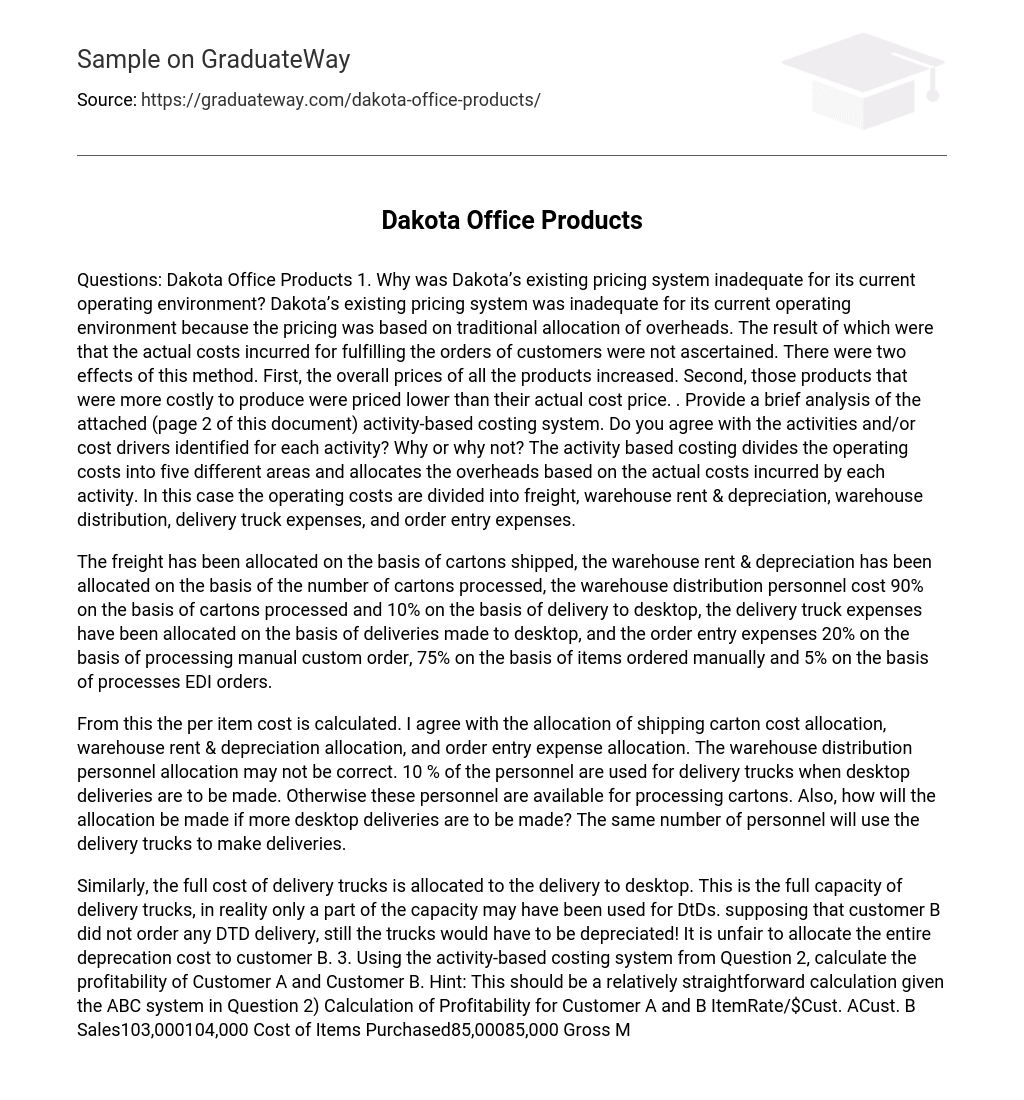What made Dakota’s current pricing system unsuitable for its current operating environment?
Dakota encountered problems with its current pricing system because it relied on traditional allocation of overheads. Consequently, the company struggled to accurately determine the true costs associated with fulfilling customer orders. This approach had two adverse effects. Firstly, it caused a general price increase for all products. Secondly, it led to underpricing for products that were more costly to produce compared to their actual cost price.
Do you agree with the identified activities and cost drivers for each activity? Why or why not?
The process of activity-based costing involves categorizing operating costs into five groups and assigning overhead based on the actual expenses incurred by each activity. These groups consist of freight, warehouse rent & depreciation, warehouse distribution, delivery truck expenses, and order entry expenses.
The allocation of costs in this operation is as follows:
– The freight is allocated based on the number of cartons shipped.
– The warehouse rent and depreciation are allocated based on the number of cartons processed.
– 90% of the warehouse distribution personnel cost is allocated based on the number of cartons processed, and 10% is allocated based on delivery to desktop.
– The delivery truck expenses are allocated based on deliveries made to desktop.
– 20% of the order entry expenses are allocated based on processing manual custom orders, 75% is allocated based on items ordered manually, and 5% is allocated based on processed EDI orders.
The per item cost is calculated from this information. I am in agreement with the allocation of costs for shipping cartons, warehouse rent and depreciation, and order entry expenses. However, there may be an issue with the allocation of costs for warehouse distribution personnel. When desktop deliveries are required, 10% of these personnel are utilized for delivery trucks. Otherwise, they are responsible for processing cartons.





